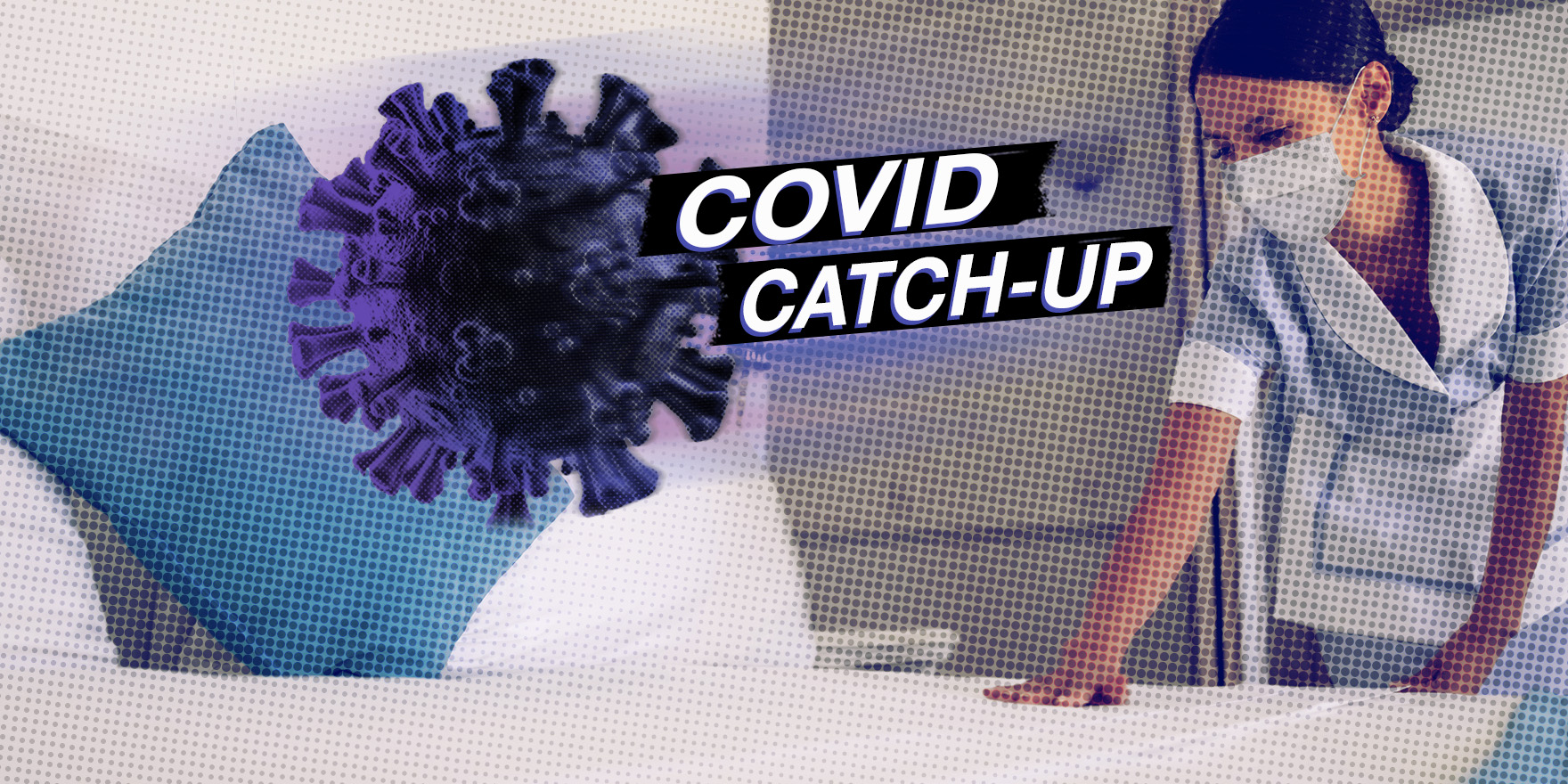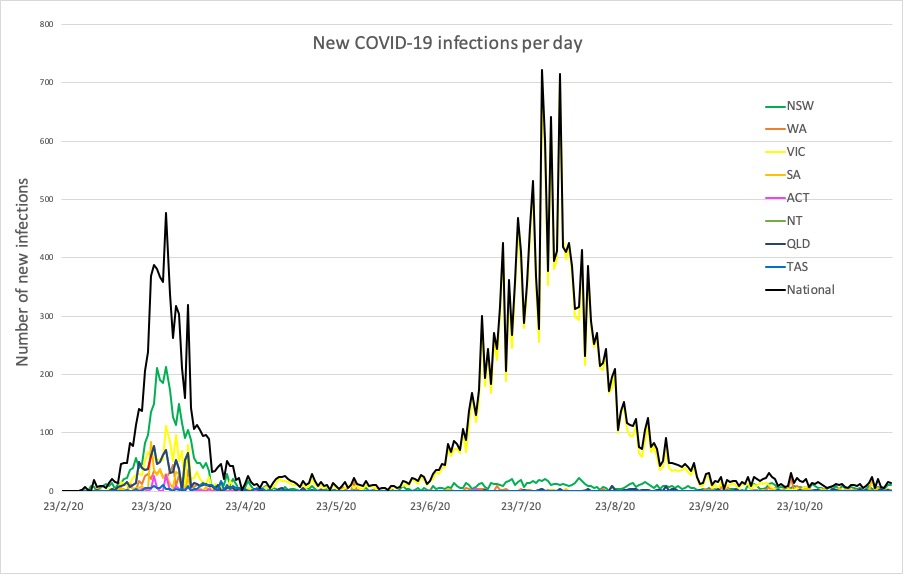A surveillance and testing program at a long-term aged care facility appeared to massively reduce infection rates, a study has found.
Welcome to The Medical Republic’s COVID Catch-Up.
It’s the day’s COVID-19 news in one convenient post. Email bianca@biancanogrady.com with any tips, comments or feedback.
23 November
- Daily swabs and surveys of residents and staff could help control aged-care COVID-19, study suggests.
- CALD Assist app can help with COVID-19 consults for non-English-speaking patients.
- More than 10 million telehealth consults with regional and remote Australia since pandemic began.
- Opening pubs, clubs and workplaces the biggest risk for COVID-19 revival, modelling suggests.
- Latest confirmed COVID-19 infection numbers from around Australia.
- A COVID-19 surveillance program at a long-term aged care facility – including daily symptom surveys and nasal swabs of all residents, employees and visitors – was associated with a 17-fold lower rate of infection compared to similar neighbouring facilities.
According to a report in Emerging Infectious Diseases, the long-term care home in Pennsylvania undertook daily surveys and testing of all 111 residents, as well as 92 staff and nine frequent visitors.
All staff and visitors had to wear PPE at all times, only full-time staff were used and no casual, family visits and group activities were banned, and any new residents admitted had to quarantine for 14 days or until they had two consecutive negative tests.
The intervention ran for 10 weeks, during which time there were just two residents who tested positive for SARS-CoV-2 – both of whom were isolated until they tested negative – and one staff member who tested positive and was required to have two negative tests before returning to work.
While the prevalence of COVID-19 within this facility was calculated to be 17 times lower than at a similar nearby facility, after adjusting for resident demographics, the authors suggested that the testing and surveillance alone may not account for the low rate of infections.
“Potential explanations for this low rate could be that testing had an impact on behavior, symptom screening kept ill staff home, or the virus was less prevalent in the community surrounding the LTCF,” they wrote. They also noted that it wasn’t clear how the two residents became infected.
“Despite these limitations, this study suggests that a proper testing strategy coupled with other measures may result in protection of vulnerable populations,” they wrote. - An app co-developed by CSIRO and Western Health in Victoria can help communicate about COVID-19 with patients from non-English-speaking backgrounds, either to assist an interpreter or where one may not be available.
The app, called CALD Assist, was originally developed to enable healthcare workers to communicate with patients from cultural and linguistically diverse backgrounds.
With the pandemic, the app has been updated with COVID-19 screening questions, including about non-medical subjects such as recent travel. - More than 10 million telehealth consultations with 3.2 million Australians have taken place in regional and remote Australia since the start of the COVID-19 pandemic, according to Medicare data.
- With community transmission of COVID-19 almost non-existent in Australia, the question now being asked is, what now for the public health restrictions that have brought the pandemic almost under control?
In a paper in the MJA, researchers have modelled a variety of scenarios for relaxation of restrictions and the impact these might have on infection rates.
They concluded that opening pubs and bars without additional restrictions such as physical distancing or contact tracing app coverage would result in the greatest increase in new infections.
Other high-risk scenarios included removing work from home directives – mainly because of the increase in public transport use – and permitting larger public events because both increased interactions between people unknown to each other.
The modelling also suggested that easing of restrictions could take up to two months to have an effect on infection rates.
“Caution should therefore be taken when sequentially easing multiple restrictions within a short time period (two months), as the consequences of restriction changes may not be immediately apparent,” the authors wrote. - Doughnut day for South Australia yesterday, with zero new cases. New South Wales recorded 11 – all in returned travellers – while Victoria is still holding firm on zero new cases since the 31 October.
Here are the latest confirmed COVID-19 infection numbers from around Australia to 9pm Sunday:
National – 27,821, with 907 deaths
ACT – 115 (0)
NSW – 4538 (11)
NT – 46 (0)
QLD – 1193 (1)
SA – 555 (0)
TAS – 230 (0)
VIC – 20,345 (0)
WA – 799 (2)



